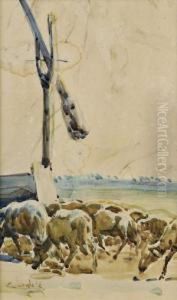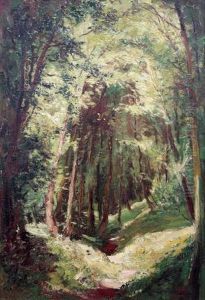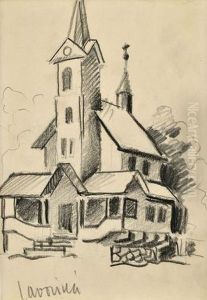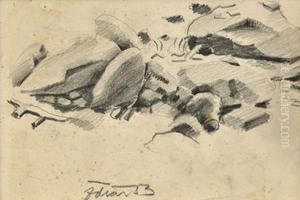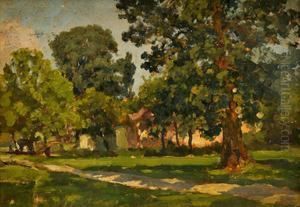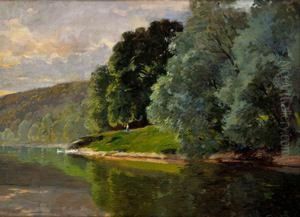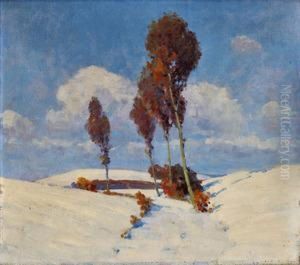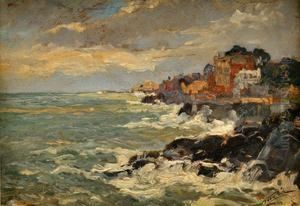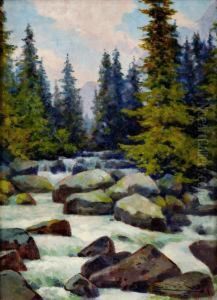Ludovit Csordak Paintings
Ludovit Csordak was a prominent Slovak painter, born in 1864 in Modra, a town in the Austro-Hungarian Empire, which is now part of Slovakia. He is known for his contributions to Slovak national art, particularly at a time when national identity and cultural expression were critical issues in the Austro-Hungarian Empire. Csordak's work is characterized by its focus on Slovak rural life, landscapes, and the Slovak people, offering a unique window into the country's culture and traditions during the late 19th and early 20th centuries.
Educated at the Academy of Fine Arts in Budapest, Csordak was deeply influenced by the academic style of painting but also showed an early interest in Realism and later, elements of Impressionism. His education and travels, including a significant period in Munich, which was a center for artistic innovation at the time, helped shape his artistic vision. Despite his exposure to various artistic movements in Europe, Csordak remained deeply committed to depicting the Slovak rural environment and its inhabitants.
Throughout his career, Csordak faced the challenge of balancing his nationalistic impulses with the broader trends in European art. His works often depicted simple village scenes, folk traditions, and landscapes imbued with a sense of national pride. Csordak's contribution to Slovak art was not limited to his paintings; he was also involved in various initiatives aimed at promoting Slovak culture and was a respected figure among his contemporaries for his dedication to the Slovak national cause.
Ludovit Csordak's legacy is preserved in numerous galleries and collections in Slovakia and abroad. His art continues to be celebrated for its role in shaping Slovak national identity through visual culture. He passed away in 1937, leaving behind a body of work that remains influential in Slovak art history. His life and work are a testament to the power of art in expressing and shaping collective national consciousness.

